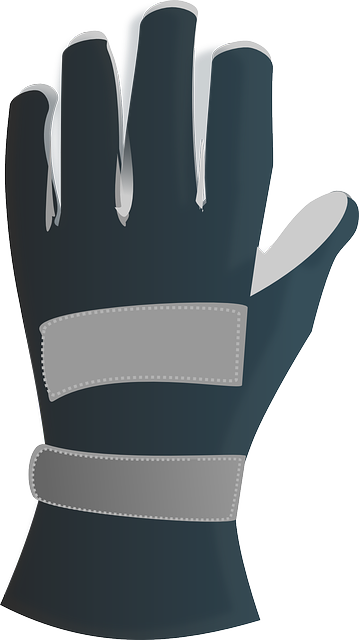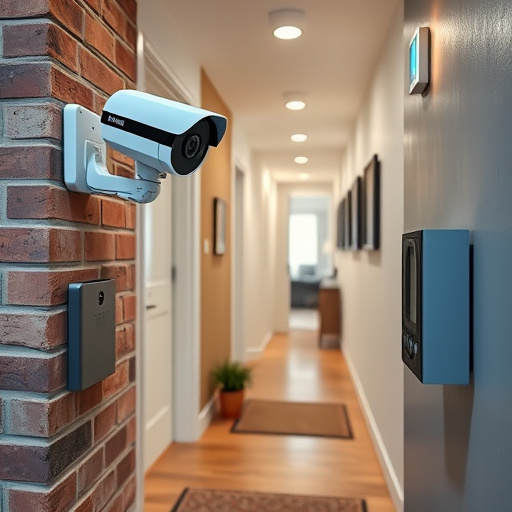Feel secure and empowered in your daily life? Investing in high-quality self-defense products is a strategic step towards taking control of your well-being. Choose discreet yet effective gear designed with practicality and user safety in mind. Imagine navigating your world with confidence, knowing you're prepared for any unexpected situation. Our best self-defense gear, tailored to your unique lifestyle, offers peace of mind without compromising comfort or style. From compact pepper spray to robust stun devices, these tools empower you to live with control and assurance, transforming your living spaces into secure sanctuaries. Trust in the power of strategic personal protection—because true safety comes from knowing you've made a smart choice for your well-being.
“Feel empowered and confident in your daily life with the right self-defense gear. Personal protection is not just a necessity; it’s a statement of your independence and peace of mind. By choosing the best self-defense products, you’re investing in your safety and well-being. From selecting effective defense tools to uncovering top-tier self-defense gear, this guide will help you navigate safety confidently. Discover how innovative self-defense products can secure your world, one step at a time.”
- Empower Your Peace of Mind: Unlocking Personal Protection with Top-Tier Self-Defense Gear
- Navigate Safety Confidently: A Guide to Choosing the Best Self-Defense Products for You
- Innovative Self-Defense Tools: Securing Your Well-being, One Product at a Time
- Find Your Defense, Find Your Freedom: Exploring Effective Personal Protection Products
- Securing Your World: The Ultimate Benefits of High-Quality Self-Defense Equipment
- Select with Confidence: Uncovering the Best Defense Tools for Ultimate Personal Safety
Empower Your Peace of Mind: Unlocking Personal Protection with Top-Tier Self-Defense Gear

Many individuals, despite living in safe neighborhoods, feel a profound sense of unease regarding their personal security. This fear is not unfounded; unexpected situations can arise, and having the right tools for self-defense offers invaluable peace of mind. Investing in high-quality self-defense products is an empowering step towards taking control of your safety. It’s about equipping yourself with options that provide confidence, knowing you’re prepared if the need arises.
When considering choosing self-defense tools, it’s essential to look beyond the physical aspects and explore what truly makes a device effective. Best self-defense gear should be designed with user safety and practicality in mind, offering discreet yet powerful protection. Personal protection products that are easily accessible and reliable can transform ordinary spaces into secure havens. Imagine feeling secure in your own home or apartment, knowing you have the means to defend yourself if required. Effective self-defense equipment is not just about deterring potential threats but also providing a sense of autonomy and empowerment. By selecting well-designed defense tools, you’re taking proactive measures to ensure your safety and the security of your loved ones, fostering an environment where worry takes a back seat to tranquility.
Navigate Safety Confidently: A Guide to Choosing the Best Self-Defense Products for You

Navigating safety confidently is a fundamental aspect of modern life for homeowners and renters alike. Choosing the right self-defense products isn’t just about protecting yourself; it’s about gaining peace of mind, knowing you’re prepared should the unexpected arise. The first step is understanding your needs and the diverse range of self-defense gear available. From stun guns to pepper spray, each tool serves a unique purpose, designed to ensure your safety without unnecessary alarm. Effective self-defense equipment is not one-size-fits-all; it’s tailored to your specific circumstances and personal comfort level.
When selecting defense tools, consider the environments you frequent most – your home, your workplace, or even outdoor spaces. Different scenarios demand different strategies. For instance, a compact, easy-to-carry pepper spray might be ideal for quick trips to the grocery store, while a more robust stun gun could offer better protection in remote areas. The best self-defense gear is one that allows you to move about your day with confidence, knowing you have a reliable backup should any situation escalate unexpectedly. Remember, the goal is not to incite fear but to empower, ensuring you feel secure and in control of your safety.
Innovative Self-Defense Tools: Securing Your Well-being, One Product at a Time

In today’s world, taking charge of your personal safety is a responsible step towards securing your well-being. Self-defense products offer a sense of empowerment and peace of mind, especially for those who call homes or apartments their sanctuary. The right self-defense gear can transform spaces into secure havens, providing homeowners and renters with the confidence to protect themselves and their loved ones. Choosing effective self-defense equipment is an essential yet often overlooked aspect of personal protection.
When considering self-defense tools, it’s crucial to select products that align with your specific needs and lifestyle. From compact pepper sprays for easy carry to robust stun devices designed for maximum impact, there’s a wide array of options available. Best self-defense gear isn’t just about power; it’s about practicality and reliability. Look for products that are easily accessible, discreet, and offer a range of features tailored to different scenarios. By investing in quality personal protection products, you’re not just acquiring tools but building a defense system that can enhance your safety and foster a deeper sense of security within your living spaces.
Find Your Defense, Find Your Freedom: Exploring Effective Personal Protection Products

In today’s world, taking charge of your personal safety is a proactive step towards securing your peace of mind. Among the many tools available, self-defense products offer individuals an extra layer of protection, empowering them to defend themselves effectively in unforeseen circumstances. Choosing the right self-defense gear can seem daunting, but it’s a crucial decision that could make all the difference. Consider your home or apartment as your sanctuary, and equipping it with strategic personal protection products is akin to fortifying a castle with unseen defenses.
When exploring self-defense options, it’s essential to select tools that align with your unique needs and circumstances. Whether you’re a homeowner seeking to safeguard your space or a renter desiring peace of mind while away from home, the best self-defense gear offers both functionality and reliability. Effective self-defense equipment ranges from simple yet powerful pepper spray to more advanced devices like personal alarms and stun guns. Each product serves as a strategic defense tool, designed to provide a moment of respite and enable you to escape potentially dangerous situations. Remember, selecting defense tools is not about fear but about preparing for unexpected challenges, ensuring your safety, and reclaiming control over your well-being.
Securing Your World: The Ultimate Benefits of High-Quality Self-Defense Equipment

Securing your world starts with the right tools. When it comes to personal protection, investing in high-quality self-defense equipment is a responsible step towards ensuring your safety and peace of mind. Think of it as building a fortress around your home or apartment, not just physically, but with knowledge and resources at your fingertips. Effective self-defense gear isn’t about fear; it’s about empowerment – the power to protect yourself, your family, and your property.
Choosing the best self-defense products is more than selecting a piece of metal or pepper spray. It involves understanding your specific needs, from the comfort and concealment of personal protection products to the reliability and effectiveness of defense tools. Consider your environment: whether you’re a homeowner looking to secure your sanctuary or a renter wanting to feel safer in your temporary space. The right self-defense tools can provide a sense of security while promoting confidence. They can be your silent guardian, giving you the time and space to assess situations calmly, knowing you have a defense option at hand. Remember, preparation is key. By investing in quality self-defense equipment, you’re taking proactive steps to navigate potential risks with greater ease and assurance.
Select with Confidence: Uncovering the Best Defense Tools for Ultimate Personal Safety

When it comes to personal protection, having the right self-defense gear can make all the difference. It’s about more than just carrying a weapon; it’s about feeling prepared and confident in any situation. Whether you’re a homeowner looking to secure your sanctuary or a renter seeking peace of mind while away from home, selecting effective self-defense equipment is an essential step toward enhancing your safety. By understanding your needs, considering various types of self-defense products, and knowing how to choose the best tools for your specific circumstances, you can transform your personal protection into a proactive measure rather than a reactive one.
Imagine walking through your home or navigating your neighborhood with the assurance that you have chosen self-defense products tailored to your lifestyle and comfort level. The best self-defense gear isn’t just about power; it’s about convenience, accessibility, and reliability. By investing time in researching and selecting defense tools with care, you create a personal safety net that empowers you to live without constant worry. Remember, true security lies not only in the equipment itself but also in the knowledge and confidence gained from choosing the right protection for your unique situation.
Empowering yourself with the right self-defense gear is not just about physical protection; it’s about reclaiming your sense of safety and freedom. Imagine stepping into any situation with confidence, knowing you’re prepared for whatever comes your way. The best self-defense products are designed to give you a sense of empowerment, allowing you to navigate life’s challenges confidently.
With the right tools, you can transform potential threats into manageable situations, giving you back the control that rightfully belongs to you. High-quality personal protection products aren’t just items; they’re symbols of your strength and resilience. They whisper reassurance, “You are capable, and you are safe.”
Don’t let uncertainty hold you back any longer. Discover the perfect self-defense gear tailored to your needs and embrace a new level of peace of mind. Remember, choosing effective defense tools is not just about survival; it’s about thriving with unwavering confidence. Take the first step towards securing your well-being today and unlock the freedom that comes with knowing you’re prepared.
Learn more about how these innovative self-defense products can empower your daily life and discover the difference they make. Your journey to personal safety starts here—are you ready to embrace it?






